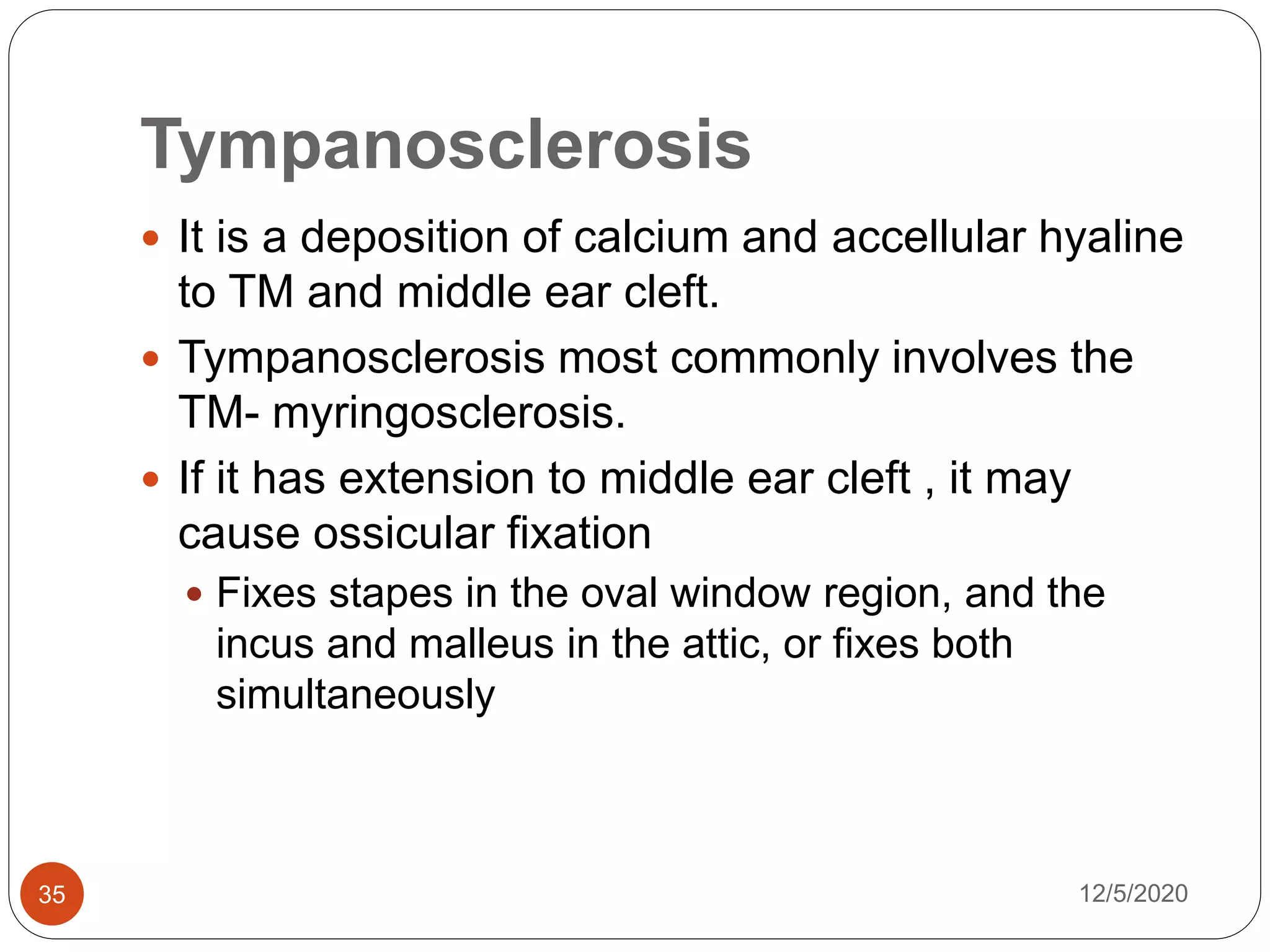This document provides an overview of the anatomy, physiology, types, clinical evaluation, and management of ossicular disorders of the middle ear. It discusses the anatomy of the middle ear and ossicles, types of ossicular dysfunction including discontinuity and fixation. Evaluation involves history, examination, audiometry, and imaging. Management options are discussed, including surgical procedures like stapedotomy and stapedectomy as well as alternatives like hearing aids. Post-operative care and potential complications are also outlined.




























































